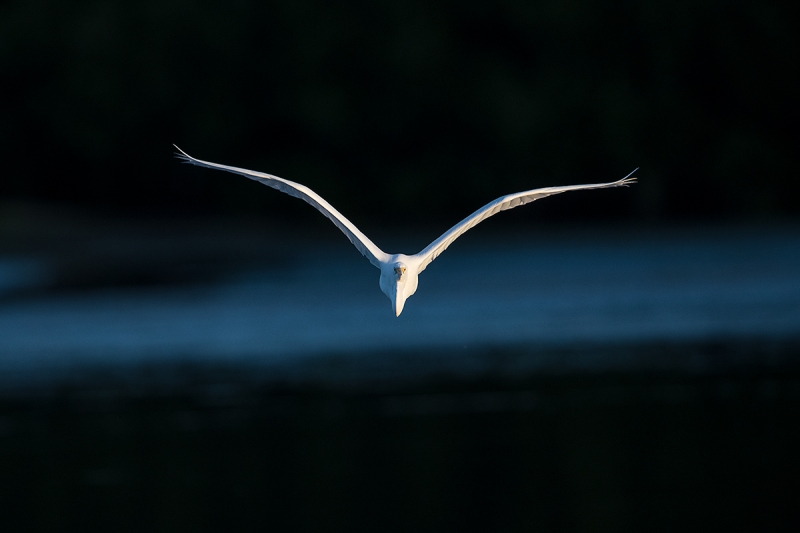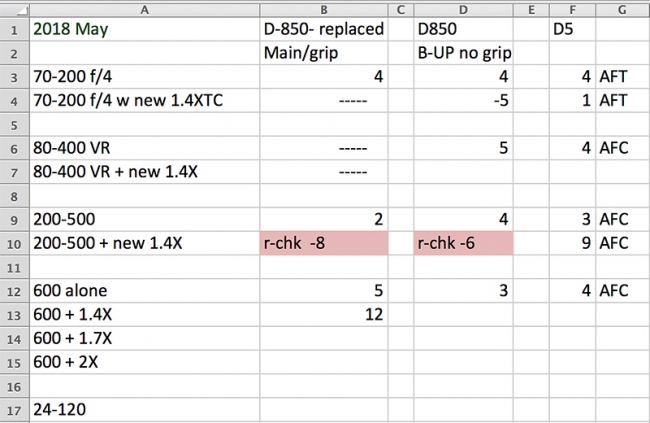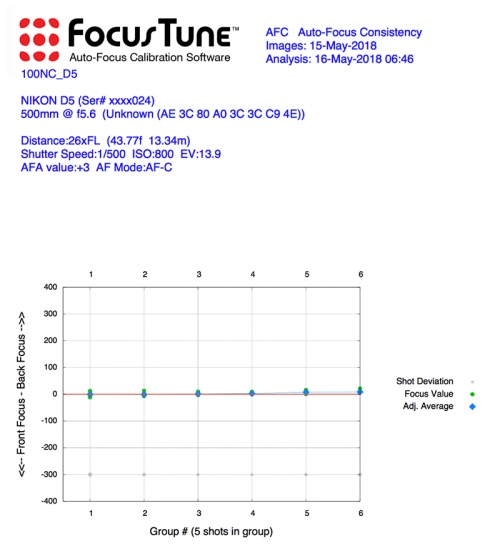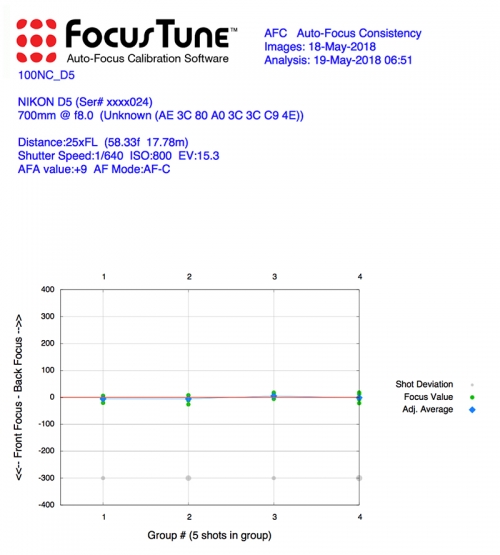Stuff
I am still feeling great and still thinking about packing for my big 7-week trip to Europe at the end of the month. I went down to the lake and was thrilled to find a gorgeous Sandhill Crane nest with two eggs right next to the shore. I am hoping against hope that it will hatch before I head out of town on the 28th. Please remember that you can help support my efforts here on the blog simply by clicking on the Amazon logo-link on the right for even the smallest purchases; make it a habit! And do understand that it works just fine with your Amazon Prime account.
BIRDS AS ART
BIRDS AS ART is registered in the U.S. Patent and Trademark Office.
Selling Your Used Photo Gear Through BIRDS AS ART
Selling your used (or like-new) photo gear through the BAA Blog is a great idea. We charge only a 5% commission. One of the more popular used gear for sale sites charged a minimum of 20%. Plus assorted fees! Yikes. They went out of business. And e-Bay fees are now up to 13%. The minimum item price here is $500 (or less for a $25 fee). If you are interested please scroll down here or shoot us an e-mail with the words Items for Sale Info Request cut and pasted into the Subject line :). Stuff that is priced fairly — I offer pricing advice to those who agree to the terms — usually sells in no time flat. Over the past year, we have sold many dozens of items. Do know that prices on some items like the EOS-1D Mark IV, the old Canon 100-400, the old 500mm, the EOS-7D and 7D Mark II and the original 400mm DO lens have been dropping steadily. You can always see the current listings by clicking on the Used Photo Gear tab on the orange-yellow menu bar near the top of each blog post page.
Money Saving Reminder
If you need a hot photo item that is out of stock at B&H, would enjoy free overnight shipping, and would like a $50 discount on your first purchase, click here to order and enter the coupon code BIRDSASART at checkout. If you are looking to strike a deal on Canon or Nikon gear (including the big telephotos) or on a multiple item order, contact Steve Elkins via e-mail or on his cell at (479) 381-2592 (Eastern time) and be sure to mention your BIRDSASART coupon code and use it for your online order. Patrick Sparkman saved $350 on a recent purchase!


Booking.Com
Several folks on the DeSoto IPT used the Booking.Com link below, got great rates, and saved a handsome $25.00 in the process. If you too would like to give Booking.Com a shot, click here and to earn a $25 reward on your first booking. Thanks to the many who have already tried and used this great service.
Gear Questions and Advice
Too many folks attending BAA IPTs and dozens of photographers whom I see in the field and on BPN, are–out of ignorance–using the wrong gear especially when it comes to tripods and more especially, tripod heads… Please know that I am always glad to answer your gear questions via e-mail. Those questions might deal with systems, camera bodies, accessories, and/or lens choices and decisions.
|
|
|
This image was created on the DeSoto IPT on April 18, 2018. I used the Induro GIT 304L/Mongoose M3.6-mounted Nikon AF-S NIKKOR 600mm f/4E FL ED VR lens, the Nikon AF-S Teleconverter TC-14E III, and the Nikon D850. ISO 800. Matrix metering minus about 1 2/3 stops as framed: 1/1600 sec. at f/6.3. AUTO1 WB at 7:20am on a clear morning. Center Group (grp) AF point/Shutter button AF was active at the moment of exposure. The array was centered on the bird’s face. Click on the image to see a larger version. Focus peaking AF Fine-tune: +4. Great Egret, sidelit flight |
Blacked Sidelight!
The morning began with silhouettes of the dancing Reddish Egret (see the Always in a Hurry blog post here). After I trekked back through the mud to the spit there was not a whole lot going on. As we were deciding whether or not to make a wiggle I spotted a Great Egret flying right at us. Even though it was 90 degrees off sun angle I figgered what the hay, acquired focus easily, and ripped off 12 frames. Once they made it to my Macbook Pro, I was glad to see that every frame was razor sharp on the eye. I wound up keeping five from the series. You gotta love Group AF.
|
|
Nikon AF Fine-tune Excel Spreadsheet |
Keep an Excel Spreadsheet!
Whether you are shooting Canon or Nikon it is imperative that you keep a record of your hard-earned results (as above). Here are a few words of explanation on the spreadsheet above:
- Five dots indicate that I have opted not to test a combination because it is unlikely that I will be using it.
- Blank boxes indicate tests that I need to get completed before the big trip.
- AFT indicates that I went with the results of the Automatic Fine-tune test.
- AFC indicates that I ran an Automatic Fine-tune test and then fine-tune those results with a FocusTune AFC test.
- All D850 tests were done using the Focus Peaking Fine-tune techniques.
- The two highlighted boxed marked r-chk indicate that I want to re-run the Focus Peaking test as I did them outdoors (with the lights) and it was a bit breezy. I am fully confident that I am within a point or two from the perfect value at most.
Nikon users can learn to do Automatic Fine-tuning and D850 Focus Peaking Fine-tuning in the The Nikon AF Fine-tune e-Guide. Canon Users and Nikon folks who want to learn to run FocusTune AutoFocus Consistency (AFC) tests will need The LensAlign/FocusTune Micro-Adjusting Tutorial e-Guide. Everyone will need the LensAlign Mark II hardware. Those who wish to purchase only the LensAlign Mark II unit can do so by clicking here. I strongly recommend that almost everyone purchase the LensAlign MK II with FocusTune so that they can learn to run the FocusTune AutoFocus Consistency (AFC) tests. Folks who own and use only D850 bodies do not need to purchase FocusTune as the results with Focus Peaking AF Fine-tune are quite accurate.
Micro-adjusting and AF Fine-Tune Tips and Tidbits
Recently I had one of my two Nikon D850 bodies replaced due to the recurrence of the AF problem that I wrote about a few weeks ago where the AF point that I set with d-9 or d-25 kept moving up and down when I tried to focus (when working in vertical format). So I have been doing lots of AF Fine-tuning and still have lots more to do to get ready for the arctic Norway trip.
With Canon zoom lenses you micro-adjust at the long end <em>and at the short end and the system interpolates with in-between focal lengths. With Nikon zoom lenses you can only AF Fine-tune at a single focal length. Since I do bird photography I always Fine-tune at the long end, 500mm for the 200-500 VR and 400mm for the 80-400 VR. Advantage Canon. Note however the when working at the shorter focal lengths you generally gain some depth-of-field.
Canon camera bodies recognize each individual lens and more importantly, each individual teleconverter, by serial number. For serious photographers who regularly travel with a backup 1.4X teleconverter, for example, this is a Godsend. The Nikon bodies cannot identify individual teleconverters. This creates a real problem if you main 1.4X TC fails on a trip … Advantage Canon.
The Nikon D-5 along with the D-850 and the D-500 offer an Automatic AF Fine-tune feature. It is much faster than doing a micro-adjustments with Canon gear. As I was doing lots of AF Fine-tuning when I first got my Nikon stuff, I quickly learned to do the Automatic AF Fine-tuning. Out of curiosity I began doing AFC (Auto-focus Consistency) tests (see two of those below) in FocusTune. And while the Automatic Fine-tuning is fast I discovered that the AFC testing was more accurate. Today I run a complete Automatic Fine-Tune test on a new combination and then — using my results as a starting point — run an AFC test or two to fine-tune the results. I have found in nearly all cases that the Nikon Automatic Fine-tune value is 2-4 units off. This workflow is still much faster than having to do a complete micro-adjustment from scratch. Advantage: Nikon.
Though the D850 offers the Automatic AF Fine-tune feature I strongly advise folks against using it. Why? The D850 has an amazing Focus Peaking feature. Patrick Sparkman devised a way to use Focus Peaking to quickly come up with an accurate Fine-tune value. One I have set up the LensAlign Mark II and my gear set up correctly, it generally takes only a minute or two to come up with an accurate Fine-tune value. And best of all, when I run an AFC test to confirm, the results are almost always identical and never more than a single unit apart, in other words, negligible. The huge advantage here goes to Nikon.
|
|
FocusTune AFC Test |
Confirming Fine-tune Values with an AFC Test
I have — though not very often — had instances where the Automatic Fine-tune feature yielded totally erratic results. I started the a test with the D5 and the 200-500 VR at 500mm; the first seven values were -6, -2, +11, +13, -7, +13, and +11. So I made a wild assed guess and tried an AFC test at +7 and noted that I needed to bring the focus forward a bit more. I ran the next one at +3 and as you can see above, the results above were dead-solid perfect.
Note that the relatively tiny grey circles (shot deviation) at the bottom of the AFC graph indicate tight AF clusters, consistently accurate autofocus. The poorer your technique the larger these circles will be. Note also that the circles will generally be larger as you go to longer effective focal lengths.
|
|
Another FocusTune AFC Test |
Confirming Fine-tune Values with an AFC Test
The results with an Automatic Fine-tune run with the 200-500 and my “second” TC-E14 came up with a fairly consistent +13. I ran an AFC test at +13 and as noted above, I was not surprised when the graph showed some back focus. So I ran a second AFC test at +9 and again was thrilled with the near-perfect results.
Again, Nikon users can learn to do Automatic Fine-tuning and D850 Focus Peaking Fine-tuning in the The Nikon AF Fine-tune e-Guide. Canon Users and Nikon folks who want to learn to run FocusTune AutoFocus Consistency (AFC) tests will need The LensAlign/FocusTune Micro-Adjusting Tutorial e-Guide. Everyone will need the LensAlign Mark II hardware. Those who wish to purchase only the LensAlign Mark II unit can do so by clicking here. I strongly recommend that almost everyone purchase the LensAlign MK II with FocusTune so that they can learn to run the FocusTune AutoFocus Consistency (AFC) tests. Folks who own and use only D850 bodies do not need to purchase FocusTune as the results with Focus Peaking AF Fine-tune are quite accurate.
Questions Welcome
Any and all questions dealing with micro-adjusting and AF fine-tuning are of course more than welcome.
Help Support the Blog
Please help support my efforts here on the blog by remembering to click on the logo link above each time that you shop Amazon. That would be greatly appreciated. There is no problem using your Prime account; just click on the link and log into your Prime account. With love, artie
If In Doubt …
If in doubt about using the BAA B&H affiliate link correctly, you can always start your search by clicking here. Please note that the tracking is invisible. Web orders only. Please, however, remember to shoot me your receipt via e-mail.




Please Remember to use my Affiliate Links and to Visit the New BAA Online Store 🙂
To show your appreciation for my continuing efforts here, we ask, as always, that you get in the habit of using my B&H affiliate links on the right side of the blog for all of your photo and electronics purchases. Please check the availability of all photographic accessories in the New BIRDS AS ART Online Store, especially the Mongoose M3.6 tripod head, Wimberley lens plates, Delkin flash cards and accessories, and LensCoat stuff.
As always, we sell only what I have used, have tested, and can depend on. We will not sell you junk. We know what you need to make creating great images easy and fun. And please remember that I am always glad to answer your gear questions via e-mail.
I would of course appreciate your using our B&H affiliate links for all of your major gear, video, and electronic purchases. For the photographic stuff mentioned in the paragraph above, and for everything else in the new store, we, meaning BAA, would of course greatly appreciate your business. Here is a huge thank you to the many who have been using our links on a regular basis and those who will be visiting the New BIRDS AS ART Online Store as well.
Be sure to like and follow BAA on Facebook by clicking on the logo link upper right. Tanks a stack.
Typos
In all blog posts and Bulletins, feel free to e-mail or to leave a comment regarding any typos or errors. Just be right :).


















Hi Artie,
I bought the LensAlign and Focus Tune last year but never really figured it out.
Bit the bullet and ordered the e-guide today… hope to have my 100-400 tuned with and without the TC before the next trip. My focus is never really as sharp as i would like, and while that’s most likely the photographer, it would be nice to eliminate any mechanical source.
Thanks.
T
Hey Arthur, The side lighting gives the image some depth and dimension. Really like all the dark against the white bird. You should but this on BPN they will have a cow.
Hi, Artie. What is the shortest focal length for which you expect micro-adjusting to provide a significant benefit?
Sweet egret image.
Thanks.
Mitch
BTW, “interpolate” would be a more appropriate word choice than “extrapolate” when you explain that “With Canon zoom lenses you micro-adjust at the long end and at the short end and the system extrapolates with in-between focal lengths.” Extrapolate applies when the estimated value is outside the range of know values and interpolate when the estimated value is between known values.
Thanks Mitch,
According to Michael Tapes even short lenses should me micro-adjusted. Thanks for the correction.
with love, artie
Thanks, Artie.
Artie, thank you for providing your experience using focus tune. Although I use a competing product and Canon equipment they are by-in-large quite accurate on static subjects upon testing and require minimal adjustment depending on the lens (usually not more than +- 1-2). Obviously, the results are dependent on FL, temperature, light temperature and direction, tolerances, etc. and the greatest variances seem to occur when adding TC’s. The calibration process occurs with single point, one shot AF and how the results translate to moving subjects using different AF points in variable light is speculative. If someone has a different perspective or insights, I would love to hear it.
Two things Adam,
#1: None of the “competing products” offer true parallel alignment. That makes the results suspect at best, totally inaccurate at worst.
#2: Whether Canon or Nikon I do a few things a bit differently that you mention above, all of course detailed in the various guides.
with love, artie
What is your “competing product” you use for Canon?
Well, as Artie observed competing products do not offer automated “parallel alignment” to minimize the possibility (albeit small) of parallax or other positional errors. I’m pretty fastidious about ensuring that the sensor is at the same height as the target (I measure), that the camera is level, and that the target and lens are parallel. Artie supports Focus Tune and I respect that. Some time ago, I had opted for an alternative, automated calibration system.